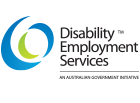
Human Resources are an integral part of any business and are a vital resource to be able to achieve the organisations key objectives. Businesses invest incredible amounts of time and money trying to promote their business as a desirable place to work, to attract talented people to their business. Of the Australian population, 20 per cent live with some form of disability, injury or health condition. That’s a significant portion of the population, which includes highly talented people who may not be able to access the information, due to the job description not being accessible. This could potentially exclude the best person for the job from applying. It makes good sense to make a job description accessible for everyone, to access the full talent pool.
How to write more inclusive job descriptions
A useful guideline for employers to think about, is that if it can be learned on the job, consider leaving it out of the description.
A simple way to make your description more inclusive is to reconsider the requirements of the role. By focusing on the essential, rather than the ideal requirements, you will cast your net wider and attract more candidates from a broader range of backgrounds.
For instance, maybe you have always gone with ‘three years of industry-specific experience’, but candidates who fall outside this profile can be just as capable and bring along new perspectives. Or maybe you have asked for people who can type up a report, when there are plenty of people who have mastered assistive technology and can use it to get the same result. atWork Australia have published some great advice on their website to support employers to be more inclusive: Four tips for employers to deliver fair and inclusive recruitment
The importance of diversity in the workplace
A diverse workforce will bring together a broad range of individuals who possess different skills and traits, such as: differing opinions, thought processes, skill sets, attitudes, work ethic and beliefs (just to name a few). These differing traits and qualities can complement each other, and develop a more well-rounded team, that can draw from their individual experiences and perspectives to create new innovative processes and methods to achieve key outcomes. A diverse workplace also enhances an organisations image in the internal and external business environment. atWork Australia released an article to help Australian businesses to build confidence in Championing diversity in recruitment.

Tips for writing inclusive job descriptions
Use gender neutral language
Using gender neutral language is a simple and effective method to reach a broader audience when advertising a position description. We should never assume a position is for a specific gender, by doing that you could exclude a large portion of the population because of a poorly written job description. The article, 11 ways to create inclusive job descriptions, provides great insights into the benefit of gender neutral language, as well as other tips on inclusive job descriptions.
Use plain language
Write job descriptions using clear and easy to follow language to avoid causing confusion. Ensure a simple sentence structure, so the message flows and is easy to consume the information. Avoid jargon, technical and legal terms and do not use acronyms. Candidates may feel they are not good enough to apply because of the intimidating language or even feel uncertain of what the position entails.
Be specific about skills and experience
Instead of including all of the “nice-to-haves” that a dream candidate might possess, stick to the “must-haves,” and you will likely see your applications from a diverse range of candidates increase. If you would still like to call out certain desired skills, you can soften the message with language like “familiarity with,” “bonus points for,” or “if you have any combination of these skills”.
Highlight the company’s commitment to diversity
Job descriptions that are welcoming to all workers should mention reasonable accommodations, such as flexible hours or telework policies, that would appeal to people who live with disability. Avoiding language that could discourage job seekers who live with a disability. For instance, a job that requires constant movement throughout an office should not be limited to “walking,” since that would exclude someone who uses a wheelchair.
Let applicants know your workplace welcomes and values all candidates with phrasing like: “ability to complete tasks with or without reasonable accommodations.” Instead of writing “access to your own vehicle isn’t always necessary,” try “access to reliable transportation,” which is more inclusive to people who live with disabilities.
Get feedback from candidates
Your job description should constantly be evolving. Before posting a job description, send drafts of it to the underrepresented talent on the teams you are hiring for and ask if they would be willing to make suggestions. Ask them if the job description would give them the impression that they would be welcome on their own team. After posting the job description, make a point of asking candidates what aspects of the job description ultimately prompted them to apply.
Summary
It is quite clear that creating an inclusive job description is very easy, it does not require additional work and creates many benefits for the organisation. An inclusive job description is a simple step to start building a diverse workforce of talented employees. If you would like additional support to develop an inclusive job description or develop your inclusive recruitment strategy more broadly, please reach out to atWork Australia.


